ChocolateHow a New World Commodity Conquered Spanish Literature
In terms of its popularity, as well as its production, chocolate was among the first foods to travel from the New World to Spain. Chocolate: How a New World Commodity Conquered Spanish Literature considers chocolate as an object of collective memory used to bridge the transatlantic gap through Spanish literary works of the early modern period, tracing the mention of chocolate from indigenous legends and early chronicles of the conquistadors to the theatre and literature of Spain.
The book considers a variety of perspectives and material cultures, such as the pre-Colombian conception of chocolate, the commercial enterprise surrounding chocolate, and the darker side of chocolate’s connections to witchcraft and sex. Encapsulating both historical and literary interests, Chocolate will appeal to anyone interested in the global history of chocolate.
Erin Alice Cowling is an assistant professor of Spanish in the Department of Humanities at MacEwan University.
Erin Alice Cowling
It’s not that often that we get to talk with a university professor. Erin Cowling is just that she is an assistant professor of Spanish in the Department of Humanities at MacEwan University. She has recently written an interesting book about chocolate in Spanish literature. It details the portrayal of a new commodity and its effects on society. Erin Cowling was kind enough to talk with us about her new book.
Booksaboutfood.com (BAF): This is a very intriguing project. I admit I am punching somewhat above my weight class in talking to you about this.
Erin Cowling: That’s okay.
BAF: So how did this come about? You’re a professor.
Erin Cowling: Yes.
BAF: This is a very specific topic.
Erin Cowling: Yeah, it is. So I generally study early modern Spanish theater. So I always tell my students just think about Shakespeare, but then translated into Spanish, right? And in fact, there’s a plethora of plays from the same time period. We have one author in Spanish who wrote over 400 plays. So Shakespeare actually doesn’t even come close, but we won’t tell anybody that.
But, so I wrote my dissertation on theater and how Spanish playwrights were depicting the Americas in that sort of 100, 150 years after the conquest. And this one play actually came up about the first beatified saint in the Americas, Rosa del Peru. So Saint Rose of Lima or of Peru.
And in that play, particularly in the last act, she uses chocolate as a medicinal thing. She takes it because her stomach is hurting her, mostly because she’s fasting to show her devotion to Jesus and God. And her servant says, “You know, a little bit of, chocolate’s not going to hurt you.”
And so I read this play when I was writing my dissertation. I thought, oh, this is fascinating. But it didn’t quite fit with all of the other stuff I was doing. So I wrote a little bit about it and I showed it to my advisor and he was like, “This is great, but it doesn’t fit with anything that you’re talking about.”
So I kind of put it on a shelf, right? I always tell my students, “Don’t ever just delete the paragraph, but you know, put it in another word doc or, you know, write it in a notebook and save it for someday.”
And so a few years later I was looking to go to the Modern Language Association’s big annual conference. It’s where we in the past have done a lot of interviewing. So sort of first round interviews for assistant professorship jobs, but also people give talks.
And so I was hoping to be interviewed. And so I thought, well, I’ll apply as well to give a talk. And I looked at some of the calls for papers and one of them was on food and literature. And I thought back to this play. And so I applied and they said, “Yes, we’d love to, to hear you talk about that.”
And so I was going to do that and sort of the week before the conference, the whole plan comes out, right? The program. And I actually got an email from a publisher who said, “Are you thinking about writing more on this topic? Because this would be a fascinating book.” And that sort of really was what got the ball rolling on the book project.
BAF: So everything just seemed to fall into place.
Erin Cowling: Yeah, really.
BAF: I should ask, what are the dates that you cover, roughly, in the book, would you say?
Erin Cowling: So the first chapter does go back to pre-Colombian. So that pre-encounter. And some of the stuff I talk about was happening thousands and thousands of years before that. But the main dates I would say are sort of that 1492, Columbus sailed the ocean blue, right?
BAF: I was not going to say that but it came into my mind.
Erin Cowling: Yeah, I almost can’t not say it. And until about sort of the mid 18th Century, so 1750ish.
BAF: So let’s say roughly, for argument’s sake, start of this story, what was the status of chocolate? Because it’s not like what we think of today. And then what was the status of it at the end of the book?
Erin Cowling: Ah, that’s a good question.
There’s just many, many stories in there. Yeah. So in the Americas before they were the Americas, chocolate sort of had a… It had a sort of a higher status, right? So there were, we have depictions of gods using it as sort of a offering to each other in their matrimonial ceremonies. So that we think that perhaps there’s a chance that that was something that was considered a gift that you might give to your spouse on your wedding day. It was thought to be sort of this nectar of the gods kind of thing.
The first Spanish conquistadors to see chocolate and understand it as something that is being used in a reverential way, see Montezuma use it. And there is some implication that perhaps he’s using it as an aphrodisiac. But it was probably mostly nobility. But there is one passage in the Popol Vuh, which is sort of the Mayan origin story, that shows that chocolate was one of the things that maybe was an ingredient that the gods used to make man.
Right? So we always hear about the Hombre se maize, men of maize, right? The corn being used as sort of a substitute for flesh. And in this case, in this one passage, they have all kinds of foods that you find in Mesoamerica. So corn and chocolate and things like that.
It was also used, I should note, as a monetary device. So the beans themselves were seen as sort of like a currency. And in fact, the Spanish, when they started creating churches, in the cathedral in Mexico city they put up an altar that was the Lord of the Cacao Bean, where there was a Jesus figure, like a statue, that they could actually use the cacao bean as their offering to Jesus in that situation.
And then if we want to go to the end, it gets to Spain. It goes through varying levels of, is this acceptable? Is this not acceptable? And we can talk about the different debates that go on there. But it does become, especially in nobilities’ houses, quite a ubiquitous thing, right? And it’s sort of expected that if you’re of a certain status, you will have chocolate available when your guests come to call and you will offer them a drink of chocolate instead of say coffee or tea or wine or whatever.
BAF: We’re not talking about frothy hot chocolate. It’s a different drink altogether, from what I understand.
Erin Cowling: It goes through iterations, right? So that’s one of the debates is, is what they should be doing with chocolate. Because the indigenous peoples tend to mix it with things like corn, ground up corn, to make it thicker. They did like it frothy. So you’ll see pictures of the woman preparing it where she’s kind of holding it very far apart, right? So that she’s sort of pouring it from a distance so it would get that frothiness.
And when it gets to Spain, they sort of question, is this a healthy thing for us? And this is one of the debates that comes up is, is corn and all of these ingredients that the indigenous people can eat something that the European constitution can also handle, right? Or stomach, if you want to say it that way. And so they start to change it. They will add eggs sometimes to make it thicker. They like it sweeter than it is in the Americas, right? So it does go through these changes as it becomes a more staple of the Spanish diet.
BAF:So it sounds like it was almost for its day, sort of a truffle, so to speak. Something rare that…was it a rarefied air of its own, that if you could consume it you were either a someone or a someplace special or a special occasion.
Erin Cowling: Most likely. We see in some of the literature, the servants starting to get into it. But it’s like a treat for them or they’re sneaking it. But yeah, I think primarily in the beginning, especially, it gets brought over to Spain. You have things like shipwrecks, so you lose cargo. Cargo seems to go missing mysteriously…
BAF: Fell off the back of the truck.
Erin Cowling: Fell off the ship, but everybody else’s stuff got there. So there is some of like that that also drives up the price or makes it more rare, at least. When you’re trying to keep it, there’s also some talk of, they specifically like certain kinds of chocolate from certain parts of the Americas. And so like from Oaxaca, Mexico, that was considered like the top. And so people who maybe didn’t have as much money but wanted to show status would mix it with lesser chocolates or with other ingredients to sort of stretch it further and say, well, no, that this is the good stuff really, you know?
BAF: So even then it was very regional and almost like wine, in a sense. Well how did you go about researching?
Erin Cowling: I read a lot. I spent a couple of summers, I went to Spain and spent some times in the archives. So there is some archival historical research where I sort of talk about this is what we see in the literature, but here’s what we see in the archives. So in Seville there’s the Archive of the Indies, which was actually originally a palace built by some of the Muslim leaders, so prior to 1492, that gets converted into a palace, but also the sort of storehouse of all of the materials and all of the information that comes back from the Indies. Because Seville was sort of their first stopping point.
So they have registers of all the stuff that came on ships. They have disputes. That’s actually where I found a document about a woman who was complaining that her husband had abandoned her and had taken and already spent her dowry. And she actually asks for them because she knows he’s got a box of chocolate coming on the next ship. She asks for them to actually give that to her to compensate her for this dowry that she lost by him being sort of philandering, a gambling person, we’ll say. And so, yeah, they have all kinds of materials in the archives that is just still on the original paper that it was written down on 500 years ago.
BAF: Do you know if she got it or not?
Erin Cowling: You know what, I don’t. I don’t. I did not have that, I just had the complaint that was like, I’m going to ask the court to say this.
BAF: It would have been nice to figure that one out. So how common is this in Spanish literature, a subject or theme in Spanish literature?
Erin Cowling: So it’s interesting. Like a lot of what I found were just little references, right? So it could be a whole play and there’s only one or two lines, right? One of the things, when I was writing the dissertation that I found is that there aren’t, surprisingly, given how many plays we have, there aren’t that many places that actually touch on the Americas, right?
We know of probably 14 to 16 that have the America serve as a setting and a major part of the play. What we see a lot more is what happens when these people come back to Spain, right? So we get these characters we call Indianos, so people who have been in the Indies and have come back with a new fortune, right?
The anxiety’s more about what do those people mean for Spain and the social mobility that they may be able to get themselves by having now gotten lands in the Americas that they wouldn’t have had access to in Spain, or these jewels, or things like chocolate that are unique and new. So that’s where I found a lot of references to chocolate, just being sort of a marker of the fact that, yes, I know the Americas, I know chocolate, I know this exotic thing that is new to you.
There are some things there’s, there are poems, there’s a poem dedicated… the original was a 10 line poem dedicated to chocolate. And then people ‘glossed’ it, meaning they took each line and then wrote another verse that sort of referred back to that line. So that was the one thing that I saw as like sort of a major piece just on chocolate. But yeah, it’s mostly just these references to say, hey, I know something about the Americas, I know something about this exotic place, I’m different and new and interesting.
BAF: So again, it comes back to status, it sounds like. If you’ve been there, you’ve done it, you’ve survived, you prospered, you’ve come back.
Erin Cowling: Yeah. And you may have been not the most exciting person before you went, right? You know, there’s all these rumors that, oh, everybody who goes to the Americas, they’re actually criminals, and they’re going to sort of like get away from their sentence or they’ve gotten out of jail, but you know, nobody wants to have anything to do with them. And then they come back with all this money and the families of the nobility who have maybe spent a lot of money… I always tell my students, castles are not cheap to upkeep, right? They want somebody with that infusion of cash.
So now it’s the question of, do you marry your daughter to the person who is going to bring that influx of cash into the family? Or do you marry her to someone else from another well-known family, but who also may have these issues of, you know, now I have two castles to upkeep, right?
BAF: Yeah. Well, it’s funny, you mentioned that the people go there, because that’s a general theme that people forget that the people who did go overseas and explore usually had a reason to get out of town.
Erin Cowling: Perhaps, yeah. Or you were the youngest son of 10 and, you know, you’ve already had a brother who’s joined the military and another brother who’s joined the priesthood and your sister’s gone to convents because your parents can’t afford the dowry. And you know, there’s all kinds of reasons to go. But it generally is because you need to find a new place in the world.
BAF: Yeah. It’s true. Sometimes you didn’t so much go as were sent, I suppose. Did anything hit you by surprise?
Erin Cowling: Certainly the dowry thing, right? and to me like what that symbolizes is just how valuable chocolate was, right? We think of chocolate as sort of being this thing that’s everywhere, right? And in a couple, in a few weeks, we’ll be handing out chocolate bars for free at our doorsteps, presumably. Last year (2020) that didn’t happen so much. But you know, hopefully this year it’ll be a little more back to normal.
And so to meI knew it was probably something that obviously they hadn’t ever seen before at a certain point in Spain. But it was really interesting to me to see how controversial it was, right? So I mentioned before, we get all these debates. And one of them is sort of this medical health related, is this something that… you know, they had the humors, is this going to go well with the European constitution?
So you get that debate, but you also get a religious debate, which kind of was the one that probably surprised me the most, and yet went back to that first play that I was telling you about, about the saint. Because the church gets very heavily involved and is very concerned because of how much fasting people did at that time to show their devotion to the church and to God.
They were very concerned that chocolate, as a drink was going to break the fast, right? You were allowed to have water. You were at that time allowed to have wine if you were fasting. But chocolate was this like, well, we add things to it, right? So if you add an egg to the chocolate, is it then a food or a drink? You still drink it, but nutritionally, is it going to give somebody enough energy to go about their day in a way that they shouldn’t if they’re supposed to be fasting and being quiet and showing their devotion to God?
BAF: Oh, that’s an interesting debate. So actually you touched on the health aspects. Was it ever accepted for health reasons or as a treatment?
Erin Cowling: So there were some, there was sort of doctors on both sides of the debate. There were some that said, “Well, if you’re really just drinking the chocolate, like you just melt it down into hot water, you’re not really doing anything to harm yourself. What’s happening is the people who are adding eggs and vanilla and sugar and whatever else to it, that’s where you’re getting into health complications,” right.
And that’s something we still today think about. How much milk is in that chocolate bar. Is it… the percentage of chocolate, does it mean it’s better for me the darker the chocolate it is? But you did have some medical professionals who felt that actually it could be used in small quantities for things like stomach pain, right? That maybe it would quell a little bit of stomach pain. They would give you some energy. But there was always this sort of idea that it had to be in moderation, right?
BAF: So it’s still, that hasn’t changed really.
Erin Cowling:No, and you know, we go back and forth, right? When I was a kid butter wasn’t good for you and everybody was eating margarine, right? And then 10 years later we’re like, oh my God, margarine is killing us all, right? So, you know, we go back and forth on these things and how pure they are and how natural they are and all that stuff. And it certainly has happened with chocolate over the years as well.
BAF: Well, so it sounds like in the literature that you’re reading and the plays, it sounds almost that… if chocolate was in the scene it was almost, if someone mentioned it it as because you knew they were coming from a well to do place, it implied that they had something more to them.
Erin Cowling: Usually, yeah. It was either you were somebody who’s coming back from Spain and perhaps have gained yourself a fortune by doing that, the hard work. Or if you’re, especially for women in Spain, you’re probably a noble woman who’s doing this to show your status, right?
And of course, we actually do get in some of the literature, sort of this joking about the people who want to show that they actually have more status than they do. And so they’ll do, like I said, the mixing of it with a lesser chocolate or with something else to stretch it further. And that comes out in some of the plays.
There’s one, in fact, in which the woman is entertaining a guest and the guy shows up at the door to say, “You still owe me money from the crappy chocolate I sold you last week.” She was like, “Go away, go away. I don’t want anybody to know, A), that I owe somebody money, and B), that it’s not the high quality chocolate that I’m supposed to be serving.”
BAF: I like that it’s sort of there in the background but the implications are huge socially for the characters, socially and thematically. So what’s next for you?
Erin Cowling: So I’m currently just starting a new project with a friend of mine. We’ve worked together before. She’s in the US. And she and I are trying to get together some groups of Latinos, Latinx theater artists who work on these early modern plays, so that we can talk about these early modern plays as sort of a cultural heritage, right?
They’re coming from places that potentially were colonized. And yet they feel this affinity for some of these plays, because a lot of these plays… It’s a lot like Shakespeare, right? Like we can still relate to them. Students who read Romeo and Juliet still relate to that sort of unrequited or forbidden love story, right?
And there’s a lot of that stuff. And not just in that sort of more romantic way, but there are stories… I mean, people still worry about how people look at them, right? That people will think that you’re not… that you’re well off or that you’re doing the right things. I think that’s still something… We have all these people doing social media now who want to become famous on their social media. And we had the same thing in the early modern period. It’s just a different platform.
~~~~~~~
©Booksaboutfood.com 2021
“Chocolate is an intellectual treat: an adventurous journey through uncharted crossroads of political, economic, literary, and culinary histories, spanning four centuries of transatlantic exchanges, from pre-Colombian times and the early age of exploration, conquest, and colonization of the new world to the twilight of the Spanish empire.” ~David Castillo, Professor of Romance Languages and Literatures, University at Buffalo
“From conquest chronicles and missionary accounts to the raging religious and medical debates of chocolate’s value, to its many and varied appearances in early modern plays and other primary sources, Cowling’s fascinating study provides ample evidence of chocolate as status symbol and the fervour that surrounded it throughout the early modern era.” ~Carolyn Nadeau, Byron S. Tucci Professor of Spanish, Illinois Wesleyan University
“Is it possible to capture delight and devastation, conquest and commerce, culture and cuisine, all in the history of one commodity? It is if the product in question is chocolate, and if your author is Erin Alice Cowling. This book is a must-read for anyone who loves chocolate – which is to say, everyone.” ~William Egginton, Decker Professor in the Humanities and Director of the Alexander Grass Humanities Institute, Johns Hopkins University
List of Illustrations
Preface
1. Introduction
2. Pre-Columbian Conceptions of Chocolate
3. Encountering Chocolate: What Is It Good For?
4. Chocolate Covered Commerce: How Chocolate Came into Popularity in the Old World
5. Chocolate in the Church: Ecclesiastical Debates on Chocolate and Fasting
6. Chocolate: A Prescription for Health?
7. Sinfully Delicious: The Darker Side of Chocolate
8. Conclusion
9. Epilogue: Chocolate Then and Chocolate Now
Appendix
Notes
Works Cited
Index


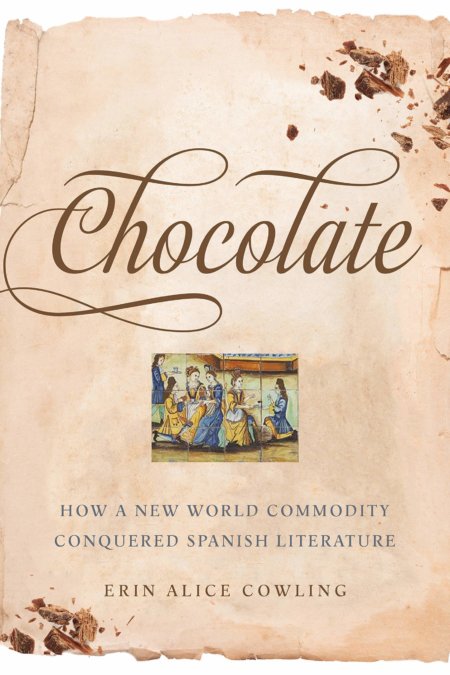


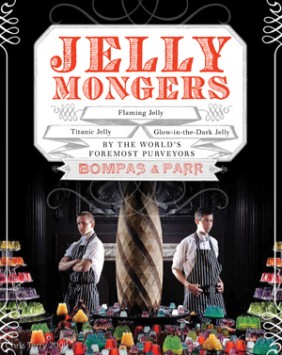
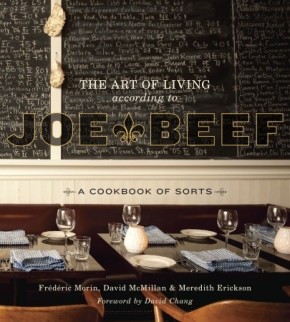
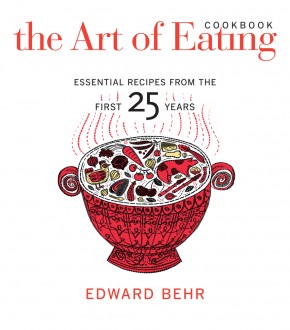
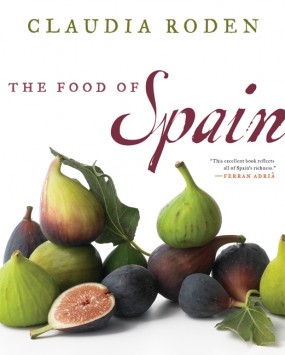
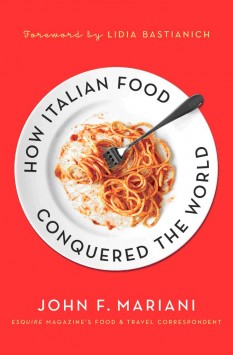
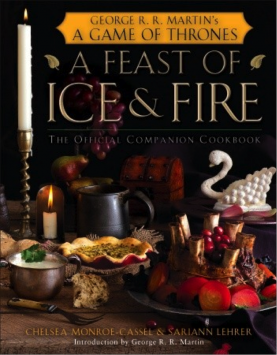
Leave a Reply